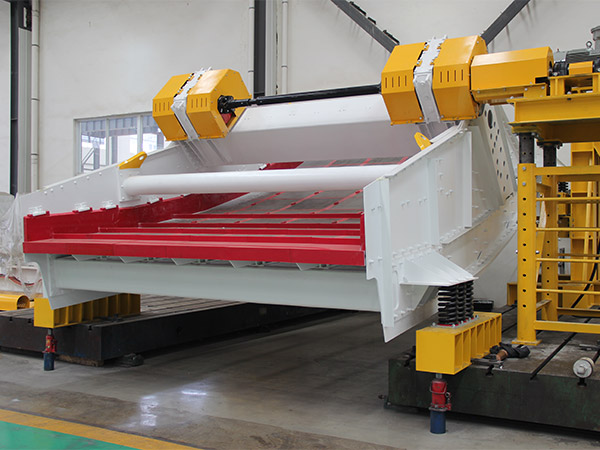What are the functions of linear vibrating screen?
A linear vibrating screen is a device that uses a vibration motor as its vibration source and is designed to screen materials by moving along a straight line. It operates by generating a continuous linear motion, allowing efficient screening of various materials.
Linear vibrating screen functions

1. Separation of Materials
Particle Size Classification: Linear vibrating screens can efficiently classify materials into different particle sizes. It separates materials into various size fractions, allowing for precise classification of particles.
2. De-Watering and Drainage
De-Watering: Linear vibrating screens are often used in applications where de-watering of materials is necessary. It removes excess moisture from the screened materials, making them ready for further processing or disposal.
3. Scalping and Pre-Screening
Scalping: Linear vibrating screens can remove large particles or impurities from raw materials before they enter a production process. This is called scalping and ensures the quality of the end product.

Pre-Screening: They are used as a preliminary screening device, separating materials of different sizes before the main crushing or grinding process. This enhances the efficiency of downstream equipment.
4. Efficient Sorting
Material Sorting: Linear vibrating screens are used in various industries for sorting different materials. For example, in the mining industry, they can sort different ores, and in the recycling industry, they can sort different types of waste materials.
5. Uniform Feeding
Even Distribution: Linear vibrating screens can evenly distribute materials onto the screening surface. This ensures uniform feed rates to downstream equipment and improves the efficiency of the entire processing line.

6. Easy Maintenance
Simplicity: Linear vibrating screens are relatively simple in design, making them easy to operate and maintain. Regular maintenance can prolong their operational life.
7. Customization and Adaptability
Adjustability: The amplitude and frequency of the vibrations can often be adjusted, allowing customization based on the specific requirements of the material being screened.
Adaptability: Linear vibrating screens can be adapted for use in various industries, including mining, metallurgy, chemical, food, and recycling, making them versatile screening solutions.
8. Energy Efficiency
Energy Saving: Compared to some other types of vibrating screens, linear vibrating screens often consume less energy, making them more energy-efficient and cost-effective.
In summary, the primary functions of a linear vibrating screen include efficient separation, de-watering, scalping, sorting, uniform feeding, and adaptability to different industries. Its versatility and simplicity make it a widely used and essential tool in various material processing applications.



